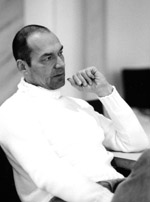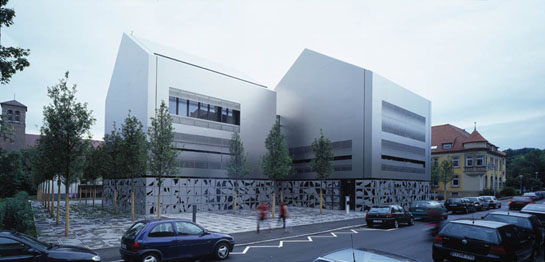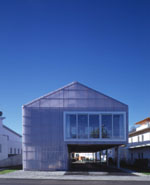
Interview

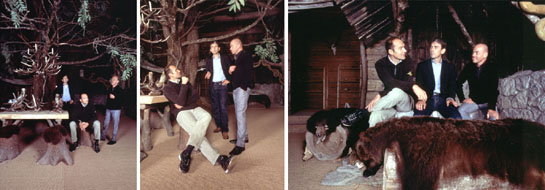
Composure is our main quality.
Markus Allmann on qualities and the Allmann Sattler Wappner studio strategy
Were you never tempted to develop a label?
We have our topics, and we do reference ourselves as well, but label architecture would bore us immensely. We cannot just throw over board certainties that we have acquired about the context.
Winning competitions was the key to your success. Would that be the case as well today?
Were it not for them our studio would not exist. Nowadays young architects that rely on competitions have no chance of prospering. In order to have an impact they have to formulate a lot of things in a much more popular way. The decisive factor in competitions was to have a stable base with regard to the developer. But competitions only make sense if there’s something to be won, and it’s not only the plot of land that is then upgraded.
And if the building is actually constructed after winning.
Over the past few years we have won 12 First Prizes for projects that were then never built. It was a difficult time. We had to become a lot more flexible. Right now we operate like an advertising agency, with smaller assignments and shorter work phases.
Did your enthusiasm for competitions suffer as a result?
The very best projects were the ones that were never built. That is like a birth process that doesn’t result in life, it leads to disappointment and viewing the whole from more of a distance. We are pretty far-removed from these phenomena - building houses, being acclaimed, being called back again, - a more composed outlook, where earlier on it was all unconditioned euphoria. Nowadays it’s more a curtailed euphoria.
And in addition nowadays developers are less tangible than ever before - they hardly even exist as people. Whereas earlier on there was just one decision-maker you are frequently confronted with an entire committee.
That’s right. Major projects are now handled almost exclusively by funds or constellations, in which the developer gives up that role - and as such his vital interest in making a contribution to building culture. This distance frequently leads to committees making relatively unconsidered decisions, which is not exactly beneficial to building culture. Because it is still the case that good architecture always has something to do with a good developer.
Are you talking about resistance that you have to overcome in order to get quality?
Certainly not in the case of good developers. They demand that we bring quality with us. We have had developers where we had reached a state of satisfaction and they felt there was more to be done...
... for example?
At Südwestmetall in Reutlingen. There the developer felt there was still potential in certain things. He kept on prompting us to stretch the basic theme until it had been given such a radical makeover that it looks like you see it today.
Are you talking here about detailed work, the tiny things that help in success?
If you have devised such a strong concept that you can formulate it verbally, then you have gained a certain percentage of quality. In order to then flesh out the final percentage points that make the project really understandable, legible and strong, highly intensive, in-detail work is needed. Several projects – such as Südwestmetall – are structured such that this detailed work is fundamental and is decisive in something being good or bad. Other projects are so convincing in terms of spatial design and so watertight that if anything details are a hindrance.
But details are always necessary, or are you talking here about specially formulated details?
Exactly. One project, the model construction workshop in Wolfratshausen, very small, but featuring the right detailed work. It is configured extremely concisely, almost provocatively so. And diametrically opposed to Südwestmetall, which only gained in quality as a result of the detailed work that had been pursued.
The succinctness has a quality ...
... an enormous one. We try to avoid anything that is superfluous. Composure ought to be the main quality of our projects. That was the case earlier on, though we didn’t always manage it. Nowadays, however, in support of our basic mindset, we are removing more and more elements.
That sounds a bit like intended ambivalence.
One of our main topics is to check for certainties but always to be aware that we are permanently working amidst uncertainty. There can only be certainty for as long as a project is on-going.
Then the building is standing...
... and the uncertainty returns. One project does not mean you know the next one will be tackled in exactly the same way. Classic modern architecture aimed for order. Our reflective Modernism allows chaos. Ambivalence is what concerns and describes us today.
And then there are the users. And architectural publications where there are no people.
We at least have published a lot in which people play a very large role. We would also never have our buildings protected, such that no alterations can be made for 30 years. Anybody that does not has yet understood the times we are living in.
To summarize: You speak on the one hand of progress, and on the other you deny that findings can be passed on?
Perhaps we could say for as far as formulating projects is concerned we have a methodology that is permanently developing, a technique for integrating intuition in the analysis, chaos in order. For each project we decide whether one side or the other should be more involved. There are always new people, new contexts, which is why our language changes. The basic tenor, however, remains the same.
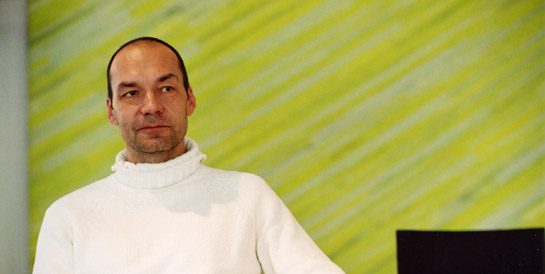
What does your ideal design process actually look like?
At the beginning we collate everything that has anything to do with the project. This collating process is our life-buoy, so we don’t get the feeling that we might have missed something out. Which analytical results are then included in the design process is a purely intuitive question. It is a sign of ignorance at times of one’s own analysis, a deliberate ignorance, if you have the feeling that the project has to make this statement. Then you continue trying to find out whether intuitive action really does produce quality. There are projects that come about purely from a gut feeling, which develop their strength by virtue of their very strangeness, being the action of a single individual. And others come about on the back of pure analysis. Projects such as these are also in our repertoire, all well and good, but we are not moved by them.
And what about the interplay between projects?
There are always three or four key projects per year that represent the next major step forward, while the other projects process things we have done to date. Once a feasible idea that can be communicated has emerged, the craftsmen get to work.
Didn’t you once say that caesuras spur you on?
Indeed, caesuras enable you to get into a project. The classic definition of aesthetics doe not provide this, but there has to be something that attracts the observer, such that he attempts to understand the project. And with smooth, perfect, cool beauty that is not the case.
It almost sounds like a game that you are playing. And what about the quality aspect?
In every project there are rules, a firm set of circumstances. Sometimes the developer is in the team, sometimes just the architect and the engineers. The game is as good or bad as the players get along with each other and the rules, so it’s a matter of interpreting the rules, extending their boundaries - or indeed questioning them.
Oliver Herwig is a freelance journalist and author. Born in 1967 in Regensburg he read German, American Studies, History, and History of Art before being awarded a doctorate. The list of publications he writes for includes the newspapers Süddeutsche Zeitung, Neue Zürcher Zeitung and Frankfurter Rundschau. In his work he focuses on architects and designers. He lives in Munich with his wife the children’s author Henriette Wich.












































